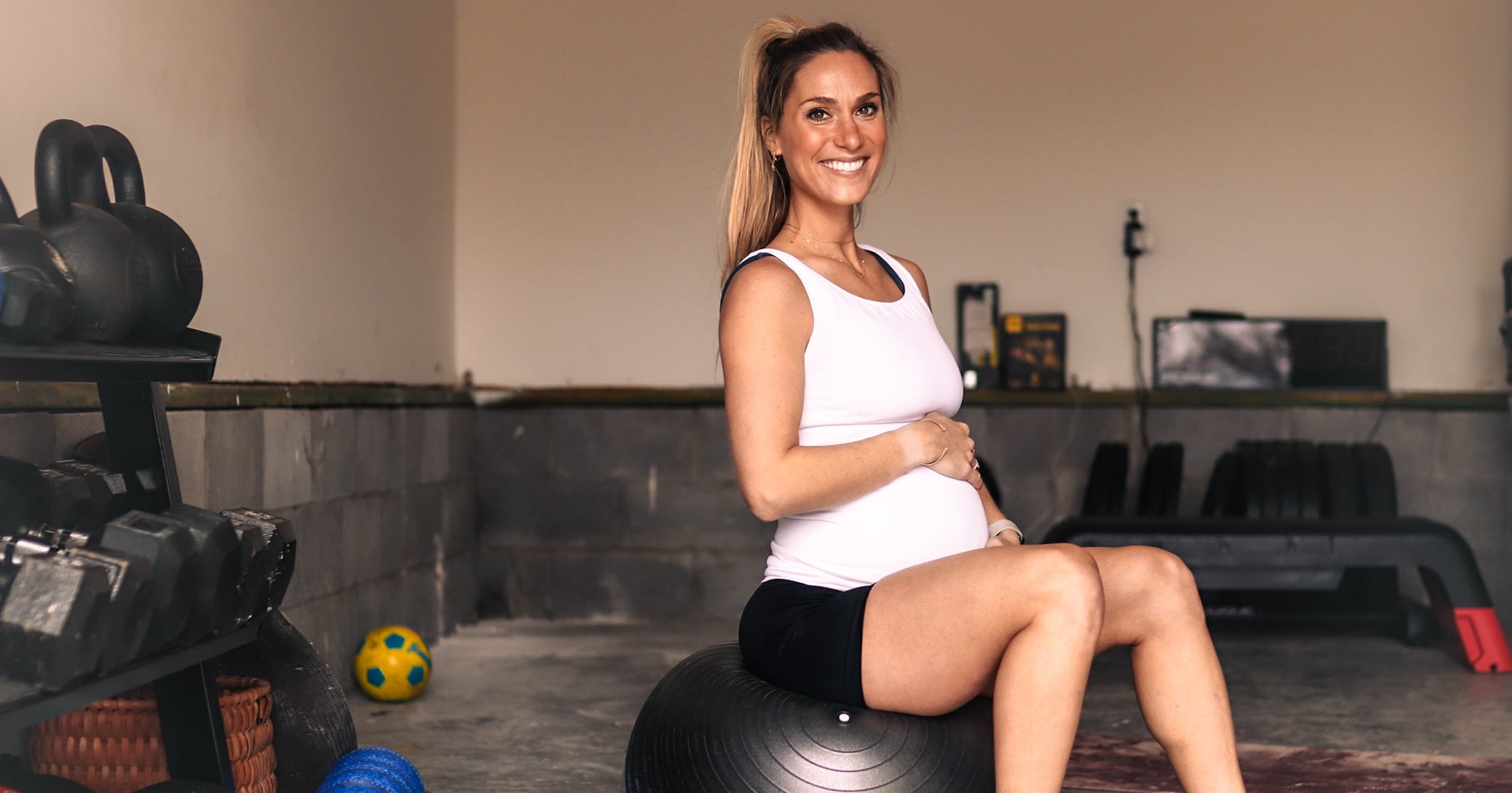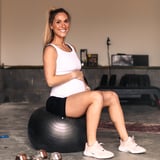When Macy Pruett, 31, found out she was pregnant with her second child, one of the first things she did was start to put together a training plan – perhaps a natural reaction for a certified personal trainer. Pruett had a few regrets about her first birthing experience and some ideas of what she wanted to do differently this time around, starting with her prenatal fitness regimen.
“My workouts weren’t necessarily intentional for pregnancy and motherhood – and when I say motherhood, I’m including pregnancy, labor and delivery, and postpartum,” Pruett tells PS about her first experience with prenatal exercise. This time, Pruett wanted to use what she knew about how her body reacted to pregnancy and childbirth to inform her fitness goals. But she also wanted to build an entire workout plan around the birthing position she hoped to deliver in: on all fours.
“We grow up seeing birth as women screaming and laying on their back with their legs spread, and having the nurses tell them to push and push,” Pruett says. Plenty of people do deliver safely and happily on their backs – but from her research, Pruett knew it wasn’t the only position. She’d delivered her firstborn on her side, and she’d also learned about some possible benefits of delivering on all fours, also called the hands-and-knees position. For instance, it’s thought to relieve pressure on your back, assist with baby’s rotation during delivery, and give your care team a clear view of what’s happening, according to Penn Medicine. Pruett felt that this position could be the ticket to a less painful delivery, with a lower risk of vaginal tears.
@fittestcore You CAN feel strong and confident in labor positions! Join my Training For Motherhood prenatal program-link in bio 🤰🏼💪🏼 #trainingformotherhood #morewithfittestcore #prenatalfitness #laborpositions #birthprep #fitpregnancy #fitpregnancyjourney #pregnant🤰
But the all-fours position can require strength and flexibility in different areas of the body, which is why Pruett wanted to make sure her exercise routine was designed to help support her being able to deliver in the position. So, she incorporated plenty of bird dog variations into her workouts, adding resistance and Pilates balls to strengthen her core and pelvic floor. She also did exercises meant to help her body deliver in the side position again, in case that’s what felt best when the time came.
Additionally, Pruett performed moves that would mimic movements she’d have to do postpartum. She made sure to do Romanian deadlifts, for instance, figuring it would help her pick up a heavy baby carrier from the floor or a chair. She chronicled the entire experience on TikTok. What became her “training for motherhood” program began to attract more and more attention, with videos bringing in thousands – and as many as five million – views.
When it came time to give birth, Pruett says her workouts paid off. She began on her side, but she felt that she was having “back labor,” which refers to pain in the low back that can occur due to the baby’s position in the pelvis during childbirth. “I was laboring towards my back and I could feel the pain in my tailbone,” she tells PS. “It almost felt like my birth canal was closed off, if that makes sense.”
So, she shifted herself onto all fours. “It relieved the pain to a degree. When I flipped over on all fours, that felt like the most open position, which I knew from my training meant that my pelvis was literally opening to make way for my son to start moving down,” Pruett says.
Pruett had an unmedicated birth (meaning no epidural) and says she was able to feel her baby moving through her. “I was able to kind of feel and keep up with where he was and his descension through the birth canal,” she explains.
Feeling her baby helped her trust herself – and advocate for herself during labor. “There was at one point in time where [the nurse] was instructed . . . to check to see how dilated I was,” Pruett says. The nurse asked Pruett to move to her back, but Pruett said no. “I could feel where my son was right on my tailbone, and I knew that if I rolled over that I would be sitting on him and that would obviously slow down the process. She told me several times, ‘I need you to flip over on your back so I can check you.’ And I finally just said, ‘No, I can’t do it. I’m gonna stay here.’ And probably 10 seconds later, his head ended up popping out.”
In looking back on her birthing experience, Pruett says she’s extremely proud of herself.
“Advocate for yourself. Do what you have to do, because this is your birth.”
“A lot of times unmedicated births, which [may] lead to switching positions and choosing your position, aren’t always supported. It wasn’t really with my firstborn. And so my husband and I kind of learned going into this birth experience that like, ‘This is my birth, and we get to advocate for ourselves,'” she says.
While Pruett says her nurse was incredibly supportive, it was the nurse’s first unmedicated birth and she wasn’t used to seeing the hands-and-knees birthing position. “[Doctors and nurses are] so educated and they know what they’ve been taught and all that, but you know your body and what’s feeling best. So that would be my advice to all first-time moms: Advocate for yourself. Do what you have to do, because this is your birth,” Pruett says.
Six weeks postpartum, Pruett says she felt much stronger than when she gave birth to her first child. “I was very active during my first pregnancy as well, but recovery was a little bit longer, a little bit slower. I bled longer and my core took a while to reconnect.” This time around, “I felt strong in the hospital, right after delivery,” Pruett says. While she wasn’t exercising right away, she believes intentionally training her body to give birth in a specific position and for the movements she’d be doing postpartum made all the difference. “It’s crazy how much I already feel reconnected to my core, and my pelvic floor feels super strong,” she says.
When she was posting about her training journey on TikTok, one question Pruett got over and over was why she felt the need to “train” for her experience at all. She read many variations of comments like: “Women have been giving birth for literally billions of years. There’s no need to train for it.”
“While that’s true, [training] helps so much,” Pruett says. “And so that’s kind of what I would finish with. Do we have to do this? No. But does it help? Absolutely,” no matter what type of birth you choose, she says.
“If you feel up for it, and are in a program that you trust, or trust yourself with training, I 11 out of 10 recommend.” If you’re expecting and interested in a training program, check out Pruett’s website to try her “Training For Motherhood” series, or do a Google search for a prenatal program near you. But all bodies and pregnancies are different, so make sure to clear any exercise program with your ob-gyn before starting.
Alexis Jones is the senior health and fitness editor at PS. Her passions and areas of expertise include women’s health and fitness, mental health, racial and ethnic disparities in healthcare, and chronic conditions. Prior to joining PS, she was the senior editor at Health magazine. Her other bylines can be found at Women’s Health, Prevention, Marie Claire, and more.



